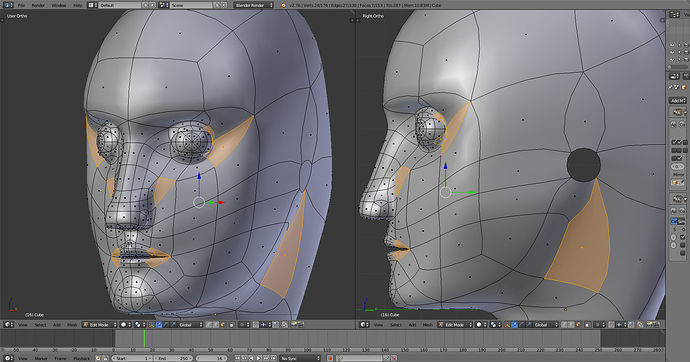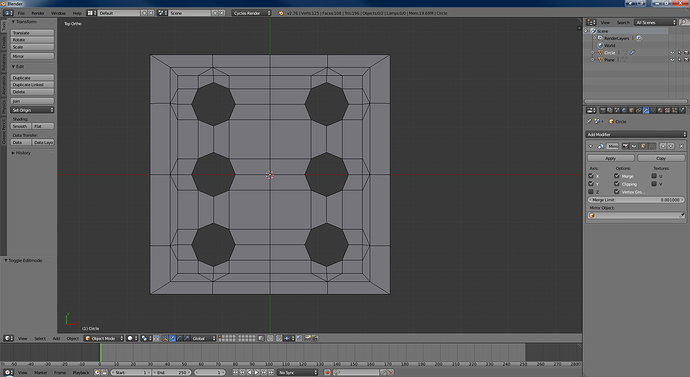I’ve heard many times it is good to avoid using triangles in meshes (at least meshes with organic shapes or that will deform). However, I am not sure how to make a mesh entirely of quadrangles. People have said an advantage of quadrangles is that edge loops flow well, but I’ve found that converting triangles to quadrangles often requires adding vertices.
I made a lot more vertices on the face than other parts of the head because the face is the part of the head that requires the most detail. This makes it hard to make sort of a grid pattern of edges across the head which I believe is what makes it hard to avoid triangles in some cases. With a large number of edges running across the face and a small number of edges on the back of the head I can’t really have a single edge loop all the way around the head and back to the same vertex (if that makes sense).
I have a screenshot below of the head mesh I made with 11 of the 19 triangles selected (the other 8 are in the center of the eyeball). Only half the head is modeled (there is a mirror modifier to create the other half). I also have a subsurf modifier which is shown to 2 levels. My mesh totals 176 vertices, 330 edges, and 153 faces (19 triangles and 134 quadrangles).
My main questions are: I wonder how important it is to make a mesh consist entirely of quadrangles? Is it possible make a mesh of a human head of all quadrangles when there are more vertices on the face than the back of the head? I’ve looked at some wireframes of human head meshes on the web and it looks like people have done this, but they have used more vertices than me. Is it better practice to make high poly models or low poly models? Since I am using subsurf modifiers would there even be an advantage of low poly models?
I also wonder if issues similar to those caused by triangles could be caused by quadrangles when there are angles far from 90 degrees so it is not close to rectangular. I have heard that it is good practice for all vertices to be connected to exactly four other vertices. I have vertices that are not part of triangles that are connected to more or less than four vertices (poles). The screenshot below highlights unusual looking quadrangles.
I watched a video from cgcookie.com about topology of a human head but the video seemed to explain the importance of good topology and what good topology is rather than how to create good topology. The author had poles connected to five edges which he considered acceptable but did not think poles connected to more than five edges should be used.
A similar issue happens for flat surfaces. I have screenshot of a playing die mesh below. Here there are not only triangles but the triangles have to stretch large distances which looks awkward. I’d imagine that triangles that stretch don’t generally create problems for flat surfaces that don’t animate, but they are difficult to edit.
I did create another mesh of a playing die that did not require triangles to stretch across the mesh (though I still needed triangles) but I wanted to include this because it shows an example of an issue I have with triangles and flat surfaces.



